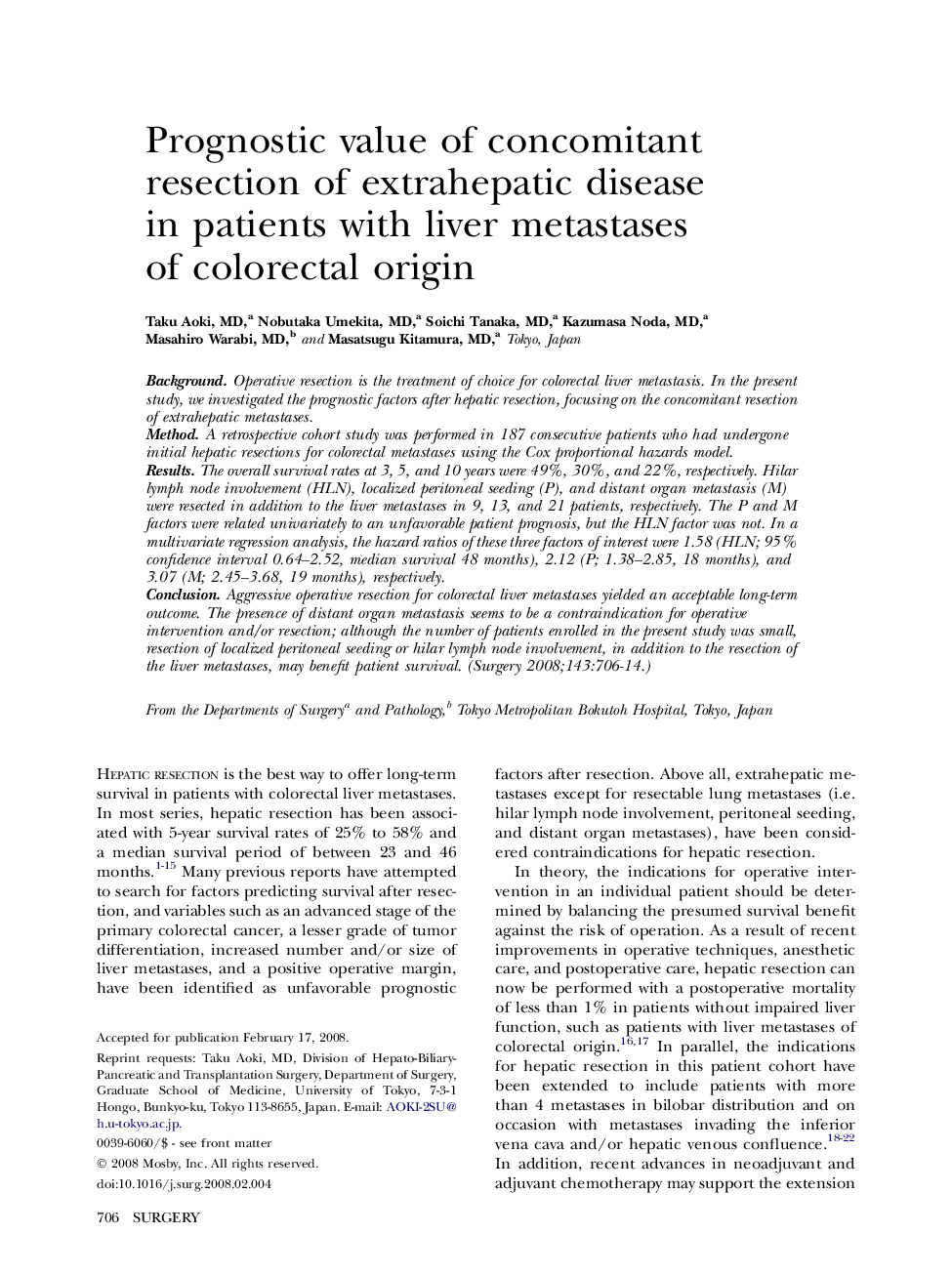| Article ID | Journal | Published Year | Pages | File Type |
|---|---|---|---|---|
| 4309912 | Surgery | 2008 | 9 Pages |
BackgroundOperative resection is the treatment of choice for colorectal liver metastasis. In the present study, we investigated the prognostic factors after hepatic resection, focusing on the concomitant resection of extrahepatic metastases.MethodA retrospective cohort study was performed in 187 consecutive patients who had undergone initial hepatic resections for colorectal metastases using the Cox proportional hazards model.ResultsThe overall survival rates at 3, 5, and 10 years were 49%, 30%, and 22%, respectively. Hilar lymph node involvement (HLN), localized peritoneal seeding (P), and distant organ metastasis (M) were resected in addition to the liver metastases in 9, 13, and 21 patients, respectively. The P and M factors were related univariately to an unfavorable patient prognosis, but the HLN factor was not. In a multivariate regression analysis, the hazard ratios of these three factors of interest were 1.58 (HLN; 95% confidence interval 0.64–2.52, median survival 48 months), 2.12 (P; 1.38–2.85, 18 months), and 3.07 (M; 2.45–3.68, 19 months), respectively.ConclusionAggressive operative resection for colorectal liver metastases yielded an acceptable long-term outcome. The presence of distant organ metastasis seems to be a contraindication for operative intervention and/or resection; although the number of patients enrolled in the present study was small, resection of localized peritoneal seeding or hilar lymph node involvement, in addition to the resection of the liver metastases, may benefit patient survival.
